El sector definitivamente esta mejorando algo, ventas de casas existentes suben 5% a 4.61 millones al anio. Se esperaba 4.65 millones.
Related News:Economy · U.S. · Real Estate .Want to save this for later? Add it to your Queue!
U.S. Home Sales Rise 5% in December
By Alex Kowalski - Jan 20, 2012 10:00 AM ET .
Purchases (ETSLTOTL) increased 5 percent to a 4.61 million annual rate, the National Association of Realtors said today in Washington. The pace was less than the 4.65 million median forecast of economists surveyed by Bloomberg News. The gain helped push down the inventory of homes for sale last month to the lowest level since 2005. Purchases in 2011 climbed 1.7 percent from a year earlier as prices fell.
Historically low mortgage rates and a pickup in employment may be giving Americans the confidence to purchase homes that have fallen in value. At the same time, another wave of foreclosures may inhibit a faster recovery in real estate as more distressed properties are put on the market.
“We’re starting to see improvement in some of the key leading housing indicators,” Carl Riccadonna, a senior U.S. economist at Deutsche Bank Securities Inc. in New York, said before the report. “First you have to see a recovery in the economy, then consumers have to register improving economic conditions, which seems to be happening already, and then they have to go and start looking for homes.”
Economists’ sales estimates ranged from 4 million to 5 million following November’s previously reported 4.42 million pace. Last month, the group revised down housing figures going back to 2007 by an average 14 percent, showing that the industry that helped spark the 18-month recession was a bigger drag on the U.S. economy than previously estimated.
Existing-home sales, tabulated when a contract closes, rose 1.4 percent from the same month last year. Total sales in 2011 were 4.26 million, compared with a peak of 7.1 million in 2005 during the housing boom. In 2008, sales totaled 4.1 million, the least since 1995.
Home Supply
The number of previously owned homes on the market dropped 9.2 percent to 2.38 million. At the current sales pace, it would take 6.2 months to sell those houses, down from 7.2 months at the end of November. A range of seven months to eight months supply is consistent with stable home prices, the group has said.
The median price of a previously-owned home declined 2.5 percent to $164,500 from $168,800 in December 2010, today’s report showed.
“December was a nice finish to a tough year in 2011,” Lawrence Yun, the group’s chief economist, said in a news conference today as the figures were released. “If that can be sustained, we are talking about a genuine recovery in 2012.”
One-Family Homes
Sales of existing single-family homes increased 4.6 percent to an annual rate of 4.11 million. Purchases of multifamily properties, including condominiums and townhouses, climbed 8.7 percent to a 500,000 pace.
Purchases rose in all four regions, led by a 10.7 percent gain in the Northeast and an 8.3 percent increase in the Midwest.
Contract cancelations were reported by 33 percent of the group’s members in December, unchanged from a month earlier.
Of all purchases, cash transactions accounted for about 31 percent, up from 28 percent in November. Distressed sales, comprised of foreclosures and short sales in which the lender agrees to a transaction for less than the balance of the mortgage, accounted for 32 percent of the total in December, up from 29 percent a month earlier.
Investors accounted for 21 percent of purchases last month, an increase from 19 percent in November.
Builder Optimism
Homebuilders are growing more optimistic the housing market is recovering. The National Association of Home Builders/Wells Fargo sentiment index rose this month to the highest level since June 2007 as sales and buyer traffic improved.
The economy added 200,000 jobs in December and the unemployment rate declined to an almost three-year low of 8.5 percent, Labor Department figures showed earlier this month. Meantime, mortgage rates have fallen to a record-low 3.88 percent as of Jan. 19, according to data by Freddie Mac.
“Consumers are beginning to realize that housing represents an undeniable value proposition, and accordingly demand is growing,” Stuart Miller, chief executive officer at Miami-based Lennar Corp. (LEN), said on a Jan. 11 conference call. “As I look ahead to 2012, I’m cautiously optimistic that we’re seeing a real bottom form and that we will begin to see signs of recovery.”
Still, Federal Reserve officials are concerned that “high unemployment and weak income growth have made it difficult for many households to purchase homes despite the large declines in house prices and mortgage rates. Weak demand to purchase homes and the restricted supply of mortgages has put considerable downward pressure on house prices in many areas,” they said in a Jan. 5 report delivered to Congress.
Foreclosure Practices
Banks may seize more than 1 million U.S. homes this year after legal scrutiny of their foreclosure practices slowed actions against delinquent property owners in 2011, RealtyTrac Inc., an Irving, California-based data seller, said Jan. 12.
Streamlining the refinancing process, easing borrowing requirements to allow investors to buy single-family properties in bulk and modifying existing loans were among measures the central bank’s report proposed to assist the housing market.
“One of the questions that potential buyers or potential investors are looking at is how much inventory is there still to come on the market,” Fed Governor Elizabeth Duke said during a Jan. 16 speech. “Such low levels of sales” indicate “it’s still going to be a long time before the inventory backlog is worked through.”
To contact the reporter on this story: Alex Kowalski
Viernes 20/01/12 Ventas de casas existentes
Re: Viernes 20/01/12 Ventas de casas existentes
admin escribió:Arnold que bueno que estas por el foro de nuevo.
VIX down 19.68
+44.68
Sears +6.23% recuperando la pobre.
Si Admin gracias, regresando luego de unas merecidas vacaciones
- Arnold
- Mensajes: 1251
- Registrado: Jue Abr 22, 2010 8:45 am
Re: Viernes 20/01/12 Ventas de casas existentes
Au up 1,660
Euro down 1.2932
Oil down 98.40
+56.88
Euro down 1.2932
Oil down 98.40
+56.88
- admin
- Site Admin
- Mensajes: 165559
- Registrado: Mié Abr 21, 2010 9:02 pm
Re: Viernes 20/01/12 Ventas de casas existentes
GM vendio 9.03 millones de autos en el 2011 son la numero 1, Toyota la numero 3.
- admin
- Site Admin
- Mensajes: 165559
- Registrado: Mié Abr 21, 2010 9:02 pm
Re: Viernes 20/01/12 Ventas de casas existentes
Que bien Arnold.
- admin
- Site Admin
- Mensajes: 165559
- Registrado: Mié Abr 21, 2010 9:02 pm
Re: Viernes 20/01/12 Ventas de casas existentes
Los graficos del dia, 
.

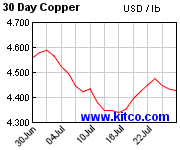
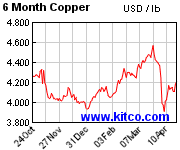
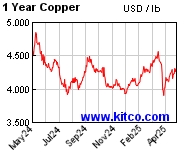
.

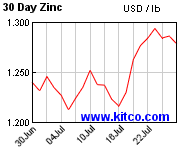
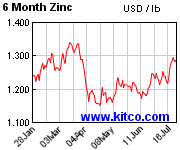
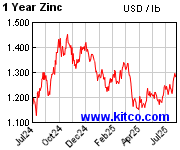
.

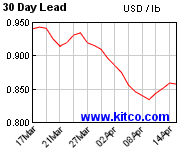
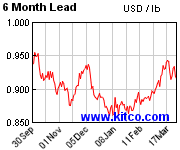
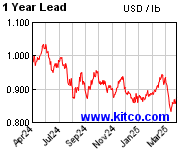
.
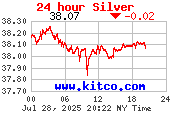
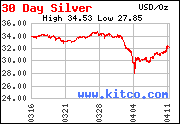
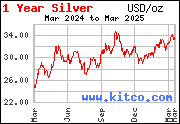
.
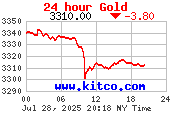
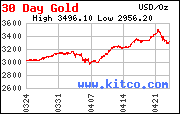
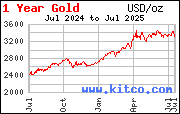
.
.




.




.




.



.



.
- Comodoro
- Mensajes: 980
- Registrado: Jue May 06, 2010 8:24 am
- Ubicación: LIMA
Re: Viernes 20/01/12 Ventas de casas existentes
+44.88 pero los otros dos indicen estan en rojo.
- admin
- Site Admin
- Mensajes: 165559
- Registrado: Mié Abr 21, 2010 9:02 pm
Re: Viernes 20/01/12 Ventas de casas existentes
SPANISHJANUARY 20, 2012, 10:56 A.M. ET.Las acciones de EE.UU. abren sin dirección clara
Por CHRIS DIETERICH
NUEVA YORK— Las acciones en Estados Unidos no registraban una dirección clara el viernes, si bien los títulos líderes subían a medida que los inversionistas digerían resultados corporativos diversos.
El Promedio Industrial Dow Jones subía 63 puntos a 12.686. El índice Standard & Poor's 500 descendía 2 puntos a 1.312, mientras que el Compuesto Nasdaq descendía 7 puntos, o 0,26% a 2.781.
Las acciones de Google retrocedían 8% luego que sus ganancias e ingresos del cuarto trimestre no cumplieran con las expectativas de los analistas.
General Electric informó el viernes antes de la apertura del mercado una ganancia de US$3.730 millones, o 35 centavos por acción, en el cuarto trimestre, e ingresos por US37.970 millones para el período. La ganancia fue superior al consenso de los analistas, pero los ingresos no cumplieron con las expectativas. Las acciones caían 1,6%.
Por su parte, IBM avanzaba 3,5% luego que sus resultados para el cuarto trimestre superaran las expectativas. La empresa predijo además que sus resultados de 2012 serán superiores a las estimaciones actuales.
Microsoft subía 3,4% luego que la empresa informara resultados que superaron las expectativas de los analistas.
Las acciones de Intel Corp. subían 0,6% luego que sus resultados superaran las expectativas de los analistas. La empresa registró una ganancia ajustada de 68 centavos por acción mientras que los ingresos crecieron 21% en el cuarto trimestre.
Las acciones de la gigante de servicios petroleros Schlumberger escalaban 2,3% luego que sus ganancias para el cuarto trimestre aumentaran 36%.
En el frente económico, las ventas de viviendas usadas en EE.UU. crecieron menos de lo esperado el mes pasado. La Asociación Nacional de Agentes Inmobiliarios, o NAR por sus siglas en inglés, informó que las ventas de viviendas usadas subieron 0,5% en diciembre frente al mes anterior, a una tasa anual ajustada por factores estacionales de 4,61 millones de unidades.
Los economistas encuestados por Dow Jones Newswires habían proyectado, en promedio, un ascenso mensual en las ventas de 5,2% a una tasa anual 4.650 millones de unidades.
Por CHRIS DIETERICH
NUEVA YORK— Las acciones en Estados Unidos no registraban una dirección clara el viernes, si bien los títulos líderes subían a medida que los inversionistas digerían resultados corporativos diversos.
El Promedio Industrial Dow Jones subía 63 puntos a 12.686. El índice Standard & Poor's 500 descendía 2 puntos a 1.312, mientras que el Compuesto Nasdaq descendía 7 puntos, o 0,26% a 2.781.
Las acciones de Google retrocedían 8% luego que sus ganancias e ingresos del cuarto trimestre no cumplieran con las expectativas de los analistas.
General Electric informó el viernes antes de la apertura del mercado una ganancia de US$3.730 millones, o 35 centavos por acción, en el cuarto trimestre, e ingresos por US37.970 millones para el período. La ganancia fue superior al consenso de los analistas, pero los ingresos no cumplieron con las expectativas. Las acciones caían 1,6%.
Por su parte, IBM avanzaba 3,5% luego que sus resultados para el cuarto trimestre superaran las expectativas. La empresa predijo además que sus resultados de 2012 serán superiores a las estimaciones actuales.
Microsoft subía 3,4% luego que la empresa informara resultados que superaron las expectativas de los analistas.
Las acciones de Intel Corp. subían 0,6% luego que sus resultados superaran las expectativas de los analistas. La empresa registró una ganancia ajustada de 68 centavos por acción mientras que los ingresos crecieron 21% en el cuarto trimestre.
Las acciones de la gigante de servicios petroleros Schlumberger escalaban 2,3% luego que sus ganancias para el cuarto trimestre aumentaran 36%.
En el frente económico, las ventas de viviendas usadas en EE.UU. crecieron menos de lo esperado el mes pasado. La Asociación Nacional de Agentes Inmobiliarios, o NAR por sus siglas en inglés, informó que las ventas de viviendas usadas subieron 0,5% en diciembre frente al mes anterior, a una tasa anual ajustada por factores estacionales de 4,61 millones de unidades.
Los economistas encuestados por Dow Jones Newswires habían proyectado, en promedio, un ascenso mensual en las ventas de 5,2% a una tasa anual 4.650 millones de unidades.
- admin
- Site Admin
- Mensajes: 165559
- Registrado: Mié Abr 21, 2010 9:02 pm
- admin
- Site Admin
- Mensajes: 165559
- Registrado: Mié Abr 21, 2010 9:02 pm
Re: Viernes 20/01/12 Ventas de casas existentes
NOTICIAS DEL SECTOR ENERGIA Y MINAS
Gobierno Decidirá Ejecución De Proyecto Minero De Newmont (Ministro)
El gobierno peruano tomará la decisión final sobre la ejecución del millonario proyecto minero Conga, de la estadounidense Newmont, luego que se realice un peritaje internacional que busca mitigar su impacto en el medio ambiente, dijo el jueves el ministro del Ambiente, Manuel Pulgar Vidal. "Es claro que la decisión final se toma desde el Estado y no porque el Estado quiera ser arbitrario, sino porque así son las reglas de los Estados", subrayó el ministro al referirse al proyecto, que es resistido por el gobierno regional de Cajamarca (noreste) donde se ubica. El proyecto Conga, en que Newmont proyecta invertir 4.800 millones de dólares, fue suspendido a pedido del gobierno ante protestas de poblaciones aledañas que temen que su ejecución afecte las cabeceras de cuenca de la región donde nacen sus fuentes de agua. Pulgar Vidal señaló que un grupo de peritos internacionales, designados por el gobierno, elaborará un informe en un plazo de 40 días, que el Ejecutivo evaluará en marzo para tomar la decisión. El objetivo del peritaje es "analizar y establecer las medidas de mitigación complementarias", en especial aquellas referidas a la disponibilidad y calidad de los recursos hídricos en la zona de influencia de Conga, dijo en rueda de prensa con corresponsales extranjeros....leer mas
Freeport Ve Venta Cobre Y Oro Sudamérica 2012 Similar Al 2011
La minera Freeport-McMoRan Copper & Gold dijo el jueves que espera que las ventas de cobre y oro desde Sudamérica se mantengan este año en niveles similares al 2011. Freeport, la mayor minera de cobre del mundo que cotiza en bolsa, prevé ventas de aproximadamente 1.300 millones de libras de cobre y 100.000 onzas de oro para el 2012, casi sin cambios desde los 1.300 millones de libras de cobre y 101.000 onzas de oro del año pasado. La minera informó además que está avanzando en su proyecto de 4.000 millones de dólares para expandir la planta concentradora de la tercera mayor productora de cobre en Perú, Cerro Verde, desde 120.000 a 360.000 toneladas métricas por día. Esto le permitiría incrementar su producción anual de aproximadamente 600 millones de libras de cobre y 15 millones de libras de molibdeno a comienzos del 2016, según la firma. El estudio de impacto ambiental se entregó en el cuarto trimestre del 2011. Freeport reportó que sus ganancias del cuatro trimestre cayeron más de la mitad debido a que la producción de la compañía se vio afectada por la larga huelga en una de sus mayores minas, Grasberg en Indonesia....leer mas
Newmont Obtiene 5,2moz De Oro El 2011
La producción atribuible de oro que obtuvo Newmont Mining el 2011 llegó a 5,2Moz, lo que concuerda con la proyección para ese año, dio a conocer la empresa estadounidense en un informe preliminar del 2011. En el caso del cobre, sumó 206Mlb (93.440t), lo que también está en línea con los pronósticos. La participación de 44% que posee Newmont en la mina mexicana La Herradura correspondió a 212.000oz de oro el año pasado. El porcentaje restante pertenece a la minera local Fresnillo. La producción atribuible en la mina peruana Yanacocha, en la cual Newmont tiene el 51,35%, fue de 664.000oz. El resto de Yanacocha, la mina de oro más grande de Latinoamérica, es propiedad de la minera local Buenaventura (43,65%) y de la Corporación Financiera Internacional del Grupo del Banco Mundial (5%). Newmont también posee el 46,94% de La Zanja en Perú, cuya producción comercial se alcanzó en el 2011. Esa cuota correspondió a 64.000oz de oro. El resto está bajo control de Buenaventura. ...leer mas
Gold Fields Estima En 3,49moz Producción De Oro Equivalente Del 2011
Gold Fields, con sede en Sudáfrica, espera que la producción atribuible del 2011 haya llegado a 3,49Moz de oro equivalente. El costo directo total para el año se anticipa en unos US$800/oz, cifra menor que la proyección anterior de US$810/oz, manifestó la empresa en un comunicado. La producción de oro equivalente en la mina peruana Cerro Corona se vio afectada por el menor precio del cobre respecto del valor del oro en el cuarto trimestre del 2011, según el comunicado. La compañía controla el 98,5% de la unidad, la cual se ubica en la Región Cajamarca. Cerro Corona, la única operación en producción que Gold Fields posee en Latinoamérica, generó 93.900oz de oro equivalente el tercer trimestre del 2011. En Perú, Gold Fields también tiene una participación de 51% en el proyecto Chucapaca, en la Región Moquegua, donde está asociada con la minera local de metales preciosos Buenaventura. El depósito Canahuire de Chucapaca tiene un recurso inferido de 83,7Mt con ley de 2,1g/t de oro equivalente o un contenido de 5,6Moz, si se considera una ley de corte de 0,67g/t. ...leer mas
MEF autoriza crédito por S/. 1,438.46 millones para garantizar proyectos de inversión
El Ministerio de Economía y Finanzas (MEF) autorizó hoy un crédito suplementario en el Presupuesto del Sector Público para el Año Fiscal 2012 hasta por la suma de 1,438 millones 466,431 nuevos soles para garantizar la continuidad de los proyectos de inversión a cargo de diversas entidades del Estado. Según un decreto supremo del MEF publicado hoy, a los 25 gobiernos regionales y a la Municipalidad Metropolitana de Lima les otorga recursos por 621 millones 29,772 soles; mientras que a los gobiernos locales de las 25 regiones del país les otorga recursos por 391 millones 178,955 soles. El decreto supremo también dispone otorgar 12 millones 148,103 soles al Ministerio de Cultura y cinco millones 496,478 soles a la Biblioteca Nacional del Perú. Se destinarán 40 millones 343,298 soles al Ministerio del Interior (Mininter), 122 millones 137,615 soles al Ministerio de Educación (Minedu) y 199 millones 402,648 soles al Ministerio de Salud (Minsa). Por su parte, el Ministerio de Agricultura (Minag) recibirá 39 millones 915,114 soles y el Ministerio de Vivienda, Construcción y Saneamiento (MVCS) seis millones 814,448 soles. La aprobación del crédito suplementario se da en cumplimiento de la Vigésima Disposición Complementaria de la Ley de Presupuesto del Sector Público para el Año Fiscal 2012, donde quedó establecido que los recursos no ejecutados al 2011 puedan usados en el presente año. ...leer mas
CAF está interesada en participar en financiamiento de Gasoducto Andino del Sur
La Corporación Andina de Fomento (CAF) anunció hoy que está muy interesada en participar en el financiamiento del Gasoducto Andino del Sur, que operará Kuntur Transportadora de Gas, porque hará realidad un mega proyecto que beneficiará a todo el sur de Perú. El representante adjunto de la CAF en Perú, Ricardo Campins, agregó que en paralelo a ese interés, el gobierno peruano a través del Ministerio de Economía y Finanzas (MEF), ha solicitado a la CAF que sea el asesor financiero de Petroperú para concretar su participación en el mencionado proyecto. Explicó que en la actualidad los abogados de la CAF y Petroperú están preparando el texto del mandato que permitirá al organismo multilateral ser el asesor de la petrolera estatal. "Esperamos que pronto se firme el mandato, ya hay borradores del documento, estamos en conversaciones y los abogados están desarrollando el documento final, esperamos que en cuestión de semanas esté listo", indicó. Manifestó que una vez firmado el mandato, la CAF estará habilitada para iniciar un análisis y estudios sobre la eventual participación de Petroperú en el proyecto, aunque de todas maneras será minoritaria. ...leer mas
Ministro de Ambiente asegura que peritaje a Conga será objetivo
Manuel Pulgar-Vidal afirmó que se han cumplido requisitos establecidos para elección de los peritos. Hoy revelan el nombre de la empresa. El ministro del Ambiente, Manuel Pulgar-Vidal, aseguró que la labor de los peritos internacionales que revisarán el estudio de impacto ambiental del proyecto minero Conga será objetiva e independiente. Indicó que se han "cumplido estrictamente" los requisitos establecidos para la elección de los peritos, pues se trata de especialistas con grado de doctor, con publicaciones internacionales y amplia experiencia, como se acordó con las autoridades y representantes de Cajamarca. Señaló que el objetivo del informe que se elabore será establecer las medidas complementarias de mitigación respecto a la disponibilidad del agua, en Cajamarca, en cuanto a cantidad y calidad, pues "esa es la prioridad". ...leer mas
INTERNACIONALES
Chilenos Acumulan A Los 18 Años La Radiación Uv Que Deberían Tener A Los 60
Los chilenos de 18 años ya recibieron la radiación ultravioleta que deberían haber acumulado a los 60, y en la actual temporada estival el problema se agudiza por la intensificación de los rayos solares en los últimos años, que prendieron la alarma entre las autoridades y encendieron los "solmáforos". En medio de una construcción en Santiago, tras el sonido de un silbato del capataz, entre hierros, cemento y grúas, una veintena de obreros hacen una pausa en sus faenas para aplicarse bloqueador solar. En el hemisferio sur del continente americano, Chile es uno de los países más afectados por los rayos ultravioleta (UV), especialmente en las regiones del norte del país, donde el sol azota con dureza durante todo el año. La legislación chilena obliga a las empresas a informar diariamente a sus empleados de los índices de radiación UV y les exige proveer objetos de protección, como gorros, gafas y bloqueador solar, cuando sus trabajadores se exponen al sol. Un cartel en la entrada de la obra informa que se está registrando un nivel extremo de radiación, y Jonathan Fernández, un experto en prevención de riesgos, los insta a sacar crema de los dispensadores....leer mas
Gobierno Decidirá Ejecución De Proyecto Minero De Newmont (Ministro)
El gobierno peruano tomará la decisión final sobre la ejecución del millonario proyecto minero Conga, de la estadounidense Newmont, luego que se realice un peritaje internacional que busca mitigar su impacto en el medio ambiente, dijo el jueves el ministro del Ambiente, Manuel Pulgar Vidal. "Es claro que la decisión final se toma desde el Estado y no porque el Estado quiera ser arbitrario, sino porque así son las reglas de los Estados", subrayó el ministro al referirse al proyecto, que es resistido por el gobierno regional de Cajamarca (noreste) donde se ubica. El proyecto Conga, en que Newmont proyecta invertir 4.800 millones de dólares, fue suspendido a pedido del gobierno ante protestas de poblaciones aledañas que temen que su ejecución afecte las cabeceras de cuenca de la región donde nacen sus fuentes de agua. Pulgar Vidal señaló que un grupo de peritos internacionales, designados por el gobierno, elaborará un informe en un plazo de 40 días, que el Ejecutivo evaluará en marzo para tomar la decisión. El objetivo del peritaje es "analizar y establecer las medidas de mitigación complementarias", en especial aquellas referidas a la disponibilidad y calidad de los recursos hídricos en la zona de influencia de Conga, dijo en rueda de prensa con corresponsales extranjeros....leer mas
Freeport Ve Venta Cobre Y Oro Sudamérica 2012 Similar Al 2011
La minera Freeport-McMoRan Copper & Gold dijo el jueves que espera que las ventas de cobre y oro desde Sudamérica se mantengan este año en niveles similares al 2011. Freeport, la mayor minera de cobre del mundo que cotiza en bolsa, prevé ventas de aproximadamente 1.300 millones de libras de cobre y 100.000 onzas de oro para el 2012, casi sin cambios desde los 1.300 millones de libras de cobre y 101.000 onzas de oro del año pasado. La minera informó además que está avanzando en su proyecto de 4.000 millones de dólares para expandir la planta concentradora de la tercera mayor productora de cobre en Perú, Cerro Verde, desde 120.000 a 360.000 toneladas métricas por día. Esto le permitiría incrementar su producción anual de aproximadamente 600 millones de libras de cobre y 15 millones de libras de molibdeno a comienzos del 2016, según la firma. El estudio de impacto ambiental se entregó en el cuarto trimestre del 2011. Freeport reportó que sus ganancias del cuatro trimestre cayeron más de la mitad debido a que la producción de la compañía se vio afectada por la larga huelga en una de sus mayores minas, Grasberg en Indonesia....leer mas
Newmont Obtiene 5,2moz De Oro El 2011
La producción atribuible de oro que obtuvo Newmont Mining el 2011 llegó a 5,2Moz, lo que concuerda con la proyección para ese año, dio a conocer la empresa estadounidense en un informe preliminar del 2011. En el caso del cobre, sumó 206Mlb (93.440t), lo que también está en línea con los pronósticos. La participación de 44% que posee Newmont en la mina mexicana La Herradura correspondió a 212.000oz de oro el año pasado. El porcentaje restante pertenece a la minera local Fresnillo. La producción atribuible en la mina peruana Yanacocha, en la cual Newmont tiene el 51,35%, fue de 664.000oz. El resto de Yanacocha, la mina de oro más grande de Latinoamérica, es propiedad de la minera local Buenaventura (43,65%) y de la Corporación Financiera Internacional del Grupo del Banco Mundial (5%). Newmont también posee el 46,94% de La Zanja en Perú, cuya producción comercial se alcanzó en el 2011. Esa cuota correspondió a 64.000oz de oro. El resto está bajo control de Buenaventura. ...leer mas
Gold Fields Estima En 3,49moz Producción De Oro Equivalente Del 2011
Gold Fields, con sede en Sudáfrica, espera que la producción atribuible del 2011 haya llegado a 3,49Moz de oro equivalente. El costo directo total para el año se anticipa en unos US$800/oz, cifra menor que la proyección anterior de US$810/oz, manifestó la empresa en un comunicado. La producción de oro equivalente en la mina peruana Cerro Corona se vio afectada por el menor precio del cobre respecto del valor del oro en el cuarto trimestre del 2011, según el comunicado. La compañía controla el 98,5% de la unidad, la cual se ubica en la Región Cajamarca. Cerro Corona, la única operación en producción que Gold Fields posee en Latinoamérica, generó 93.900oz de oro equivalente el tercer trimestre del 2011. En Perú, Gold Fields también tiene una participación de 51% en el proyecto Chucapaca, en la Región Moquegua, donde está asociada con la minera local de metales preciosos Buenaventura. El depósito Canahuire de Chucapaca tiene un recurso inferido de 83,7Mt con ley de 2,1g/t de oro equivalente o un contenido de 5,6Moz, si se considera una ley de corte de 0,67g/t. ...leer mas
MEF autoriza crédito por S/. 1,438.46 millones para garantizar proyectos de inversión
El Ministerio de Economía y Finanzas (MEF) autorizó hoy un crédito suplementario en el Presupuesto del Sector Público para el Año Fiscal 2012 hasta por la suma de 1,438 millones 466,431 nuevos soles para garantizar la continuidad de los proyectos de inversión a cargo de diversas entidades del Estado. Según un decreto supremo del MEF publicado hoy, a los 25 gobiernos regionales y a la Municipalidad Metropolitana de Lima les otorga recursos por 621 millones 29,772 soles; mientras que a los gobiernos locales de las 25 regiones del país les otorga recursos por 391 millones 178,955 soles. El decreto supremo también dispone otorgar 12 millones 148,103 soles al Ministerio de Cultura y cinco millones 496,478 soles a la Biblioteca Nacional del Perú. Se destinarán 40 millones 343,298 soles al Ministerio del Interior (Mininter), 122 millones 137,615 soles al Ministerio de Educación (Minedu) y 199 millones 402,648 soles al Ministerio de Salud (Minsa). Por su parte, el Ministerio de Agricultura (Minag) recibirá 39 millones 915,114 soles y el Ministerio de Vivienda, Construcción y Saneamiento (MVCS) seis millones 814,448 soles. La aprobación del crédito suplementario se da en cumplimiento de la Vigésima Disposición Complementaria de la Ley de Presupuesto del Sector Público para el Año Fiscal 2012, donde quedó establecido que los recursos no ejecutados al 2011 puedan usados en el presente año. ...leer mas
CAF está interesada en participar en financiamiento de Gasoducto Andino del Sur
La Corporación Andina de Fomento (CAF) anunció hoy que está muy interesada en participar en el financiamiento del Gasoducto Andino del Sur, que operará Kuntur Transportadora de Gas, porque hará realidad un mega proyecto que beneficiará a todo el sur de Perú. El representante adjunto de la CAF en Perú, Ricardo Campins, agregó que en paralelo a ese interés, el gobierno peruano a través del Ministerio de Economía y Finanzas (MEF), ha solicitado a la CAF que sea el asesor financiero de Petroperú para concretar su participación en el mencionado proyecto. Explicó que en la actualidad los abogados de la CAF y Petroperú están preparando el texto del mandato que permitirá al organismo multilateral ser el asesor de la petrolera estatal. "Esperamos que pronto se firme el mandato, ya hay borradores del documento, estamos en conversaciones y los abogados están desarrollando el documento final, esperamos que en cuestión de semanas esté listo", indicó. Manifestó que una vez firmado el mandato, la CAF estará habilitada para iniciar un análisis y estudios sobre la eventual participación de Petroperú en el proyecto, aunque de todas maneras será minoritaria. ...leer mas
Ministro de Ambiente asegura que peritaje a Conga será objetivo
Manuel Pulgar-Vidal afirmó que se han cumplido requisitos establecidos para elección de los peritos. Hoy revelan el nombre de la empresa. El ministro del Ambiente, Manuel Pulgar-Vidal, aseguró que la labor de los peritos internacionales que revisarán el estudio de impacto ambiental del proyecto minero Conga será objetiva e independiente. Indicó que se han "cumplido estrictamente" los requisitos establecidos para la elección de los peritos, pues se trata de especialistas con grado de doctor, con publicaciones internacionales y amplia experiencia, como se acordó con las autoridades y representantes de Cajamarca. Señaló que el objetivo del informe que se elabore será establecer las medidas complementarias de mitigación respecto a la disponibilidad del agua, en Cajamarca, en cuanto a cantidad y calidad, pues "esa es la prioridad". ...leer mas
INTERNACIONALES
Chilenos Acumulan A Los 18 Años La Radiación Uv Que Deberían Tener A Los 60
Los chilenos de 18 años ya recibieron la radiación ultravioleta que deberían haber acumulado a los 60, y en la actual temporada estival el problema se agudiza por la intensificación de los rayos solares en los últimos años, que prendieron la alarma entre las autoridades y encendieron los "solmáforos". En medio de una construcción en Santiago, tras el sonido de un silbato del capataz, entre hierros, cemento y grúas, una veintena de obreros hacen una pausa en sus faenas para aplicarse bloqueador solar. En el hemisferio sur del continente americano, Chile es uno de los países más afectados por los rayos ultravioleta (UV), especialmente en las regiones del norte del país, donde el sol azota con dureza durante todo el año. La legislación chilena obliga a las empresas a informar diariamente a sus empleados de los índices de radiación UV y les exige proveer objetos de protección, como gorros, gafas y bloqueador solar, cuando sus trabajadores se exponen al sol. Un cartel en la entrada de la obra informa que se está registrando un nivel extremo de radiación, y Jonathan Fernández, un experto en prevención de riesgos, los insta a sacar crema de los dispensadores....leer mas
- Arnold
- Mensajes: 1251
- Registrado: Jue Abr 22, 2010 8:45 am
Re: Viernes 20/01/12 Ventas de casas existentes
Canada
INDEX VALUE CHANGE % CHANGE TIME
S&P/TSX COMPOSITE INDEX 12,375.00 -5.64 -0.05% 11:25
S&P/TSX EQUITY INDEX 12,751.60 -8.60 -0.07% 11:22
S&P/TSX 60 INDEX 707.01 -0.41 -0.06% 11:22
S&P/TSX VENTURE COMP IDX 1,553.19 -1.01 -0.06% 11:22
Mexico
INDEX VALUE CHANGE % CHANGE TIME
MEXICO IPC INDEX 37,581.30 -98.77 -0.26% 11:06
MEXICO INMEX INDEX 2,106.68 -0.72 -0.03% 11:02
MEXICO IMC30 INDEX 438.22 -0.14 -0.03% 11:02
MSE TOTAL RETURN INDEX 45,082.00 -49.62 -0.11% 11:02
Panama
INDEX VALUE CHANGE % CHANGE TIME
Bolsa de Panama General 345.15 0.01 0.00% 01/19
Argentina
INDEX VALUE CHANGE % CHANGE TIME
ARGENTINA MERVAL INDEX 2,886.71 4.57 0.16% 11:00
ARGENTINA BURCAP INDEX 9,832.67 -7.78 -0.08% 11:02
M.AR MERVAL ARGENTINA IX 2,259.54 7.32 0.33% 11:02
INDICE BOLSA GENERAL 160,827.00 -23.36 -0.01% 11:02
Brazil
INDEX VALUE CHANGE % CHANGE TIME
BRAZIL BOVESPA INDEX 62,014.90 88.26 0.14% 11:25
BRAZIL IBrX INDEX 21,087.50 3.56 0.02% 11:06
BRAZIL ELECTRIC.ENRGY IX 32,379.40 -31.53 -0.10% 11:07
BRAZIL TELECOM INDEX 1,713.72 -8.95 -0.52% 11:07
BRAZIL CORP GOV INDEX 7,093.09 21.06 0.30% 11:07
BRAZIL VAL/BOV 2 TIER IX 6,092.98 32.22 0.53% 11:07
BRAZIL IBrX-50 INDEX 8,955.54 1.00 0.01% 11:07
Chile
INDEX VALUE CHANGE % CHANGE TIME
CHILE STOCK MKT SELECT 4,262.91 -6.03 -0.14% 11:22
CHILE STOCK MKT GENERAL 20,490.80 -24.54 -0.12% 11:22
CHILE INTER-10 INDEX 5,430.60 5.14 0.09% 11:22
CHILE 65 INDEX 2,966.61 -4.47 -0.15% 11:05
CHILE LARGE CAP INDEX 2,839.71 -5.44 -0.19% 11:05
CHILE SMALL CAP INDEX 3,880.75 -5.85 -0.15% 10:39
Venezuela
INDEX VALUE CHANGE % CHANGE TIME
VENEZUELA STOCK MKT INDX 120,955.00 0.00 0.00% 08:29
Peru
INDEX VALUE CHANGE % CHANGE TIME
PERU LIMA GENERAL INDEX 20,919.70 -86.82 -0.41% 11:07
PERU LIMA SELECTIVE INDX 28,943.20 -103.27 -0.36% 11:07
Colombia
INDEX VALUE CHANGE % CHANGE TIME
COLOMBIA COLCAP INDEX 1,601.26 -5.23 -0.33% 11:00
COLOMBIA COL20 INDEX 1,387.95 2.30 0.17% 11:00
IGBC GENERAL INDEX 13,459.80 -16.81 -0.12% 11:00
INDEX VALUE CHANGE % CHANGE TIME
S&P/TSX COMPOSITE INDEX 12,375.00 -5.64 -0.05% 11:25
S&P/TSX EQUITY INDEX 12,751.60 -8.60 -0.07% 11:22
S&P/TSX 60 INDEX 707.01 -0.41 -0.06% 11:22
S&P/TSX VENTURE COMP IDX 1,553.19 -1.01 -0.06% 11:22
Mexico
INDEX VALUE CHANGE % CHANGE TIME
MEXICO IPC INDEX 37,581.30 -98.77 -0.26% 11:06
MEXICO INMEX INDEX 2,106.68 -0.72 -0.03% 11:02
MEXICO IMC30 INDEX 438.22 -0.14 -0.03% 11:02
MSE TOTAL RETURN INDEX 45,082.00 -49.62 -0.11% 11:02
Panama
INDEX VALUE CHANGE % CHANGE TIME
Bolsa de Panama General 345.15 0.01 0.00% 01/19
Argentina
INDEX VALUE CHANGE % CHANGE TIME
ARGENTINA MERVAL INDEX 2,886.71 4.57 0.16% 11:00
ARGENTINA BURCAP INDEX 9,832.67 -7.78 -0.08% 11:02
M.AR MERVAL ARGENTINA IX 2,259.54 7.32 0.33% 11:02
INDICE BOLSA GENERAL 160,827.00 -23.36 -0.01% 11:02
Brazil
INDEX VALUE CHANGE % CHANGE TIME
BRAZIL BOVESPA INDEX 62,014.90 88.26 0.14% 11:25
BRAZIL IBrX INDEX 21,087.50 3.56 0.02% 11:06
BRAZIL ELECTRIC.ENRGY IX 32,379.40 -31.53 -0.10% 11:07
BRAZIL TELECOM INDEX 1,713.72 -8.95 -0.52% 11:07
BRAZIL CORP GOV INDEX 7,093.09 21.06 0.30% 11:07
BRAZIL VAL/BOV 2 TIER IX 6,092.98 32.22 0.53% 11:07
BRAZIL IBrX-50 INDEX 8,955.54 1.00 0.01% 11:07
Chile
INDEX VALUE CHANGE % CHANGE TIME
CHILE STOCK MKT SELECT 4,262.91 -6.03 -0.14% 11:22
CHILE STOCK MKT GENERAL 20,490.80 -24.54 -0.12% 11:22
CHILE INTER-10 INDEX 5,430.60 5.14 0.09% 11:22
CHILE 65 INDEX 2,966.61 -4.47 -0.15% 11:05
CHILE LARGE CAP INDEX 2,839.71 -5.44 -0.19% 11:05
CHILE SMALL CAP INDEX 3,880.75 -5.85 -0.15% 10:39
Venezuela
INDEX VALUE CHANGE % CHANGE TIME
VENEZUELA STOCK MKT INDX 120,955.00 0.00 0.00% 08:29
Peru
INDEX VALUE CHANGE % CHANGE TIME
PERU LIMA GENERAL INDEX 20,919.70 -86.82 -0.41% 11:07
PERU LIMA SELECTIVE INDX 28,943.20 -103.27 -0.36% 11:07
Colombia
INDEX VALUE CHANGE % CHANGE TIME
COLOMBIA COLCAP INDEX 1,601.26 -5.23 -0.33% 11:00
COLOMBIA COL20 INDEX 1,387.95 2.30 0.17% 11:00
IGBC GENERAL INDEX 13,459.80 -16.81 -0.12% 11:00
- admin
- Site Admin
- Mensajes: 165559
- Registrado: Mié Abr 21, 2010 9:02 pm
Re: Viernes 20/01/12 Ventas de casas existentes
Copper January 20,11:19
Bid/Ask 3.7555 - 3.7564
Change -0.0387 -1.02%
Low/High 3.7297 - 3.8151
Charts
Nickel January 20,11:19
Bid/Ask 9.3083 - 9.3151
Change +0.1691 +1.85%
Low/High 9.0984 - 9.3528
Charts
Aluminum January 20,11:19
Bid/Ask 0.9839 - 0.9844
Change -0.0036 -0.37%
Low/High 0.9764 - 0.9907
Charts
Zinc January 20,11:19
Bid/Ask 0.9141 - 0.9152
Change -0.0039 -0.43%
Low/High 0.9082 - 0.9239
Charts
Lead January 20,11:18
Bid/Ask 0.9752 - 0.9755
Change +0.0017 +0.18%
Low/High 0.9610 - 0.9797
Bid/Ask 3.7555 - 3.7564
Change -0.0387 -1.02%
Low/High 3.7297 - 3.8151
Charts
Nickel January 20,11:19
Bid/Ask 9.3083 - 9.3151
Change +0.1691 +1.85%
Low/High 9.0984 - 9.3528
Charts
Aluminum January 20,11:19
Bid/Ask 0.9839 - 0.9844
Change -0.0036 -0.37%
Low/High 0.9764 - 0.9907
Charts
Zinc January 20,11:19
Bid/Ask 0.9141 - 0.9152
Change -0.0039 -0.43%
Low/High 0.9082 - 0.9239
Charts
Lead January 20,11:18
Bid/Ask 0.9752 - 0.9755
Change +0.0017 +0.18%
Low/High 0.9610 - 0.9797
- admin
- Site Admin
- Mensajes: 165559
- Registrado: Mié Abr 21, 2010 9:02 pm
Re: Viernes 20/01/12 Ventas de casas existentes
Peru -0.45%
Movimientos de mercado por variación diariaAcciones Ultima cotización (S/.) Var. día (S/.) Var. día (%)
VEM US$ 0.31 US$ 0.04 14.81
SGP US$ 0.24 US$ 0.01 4.35
CDG US$ 0.31 US$ 0.01 3.33
Acciones Ultima cotización (S/.) Var. día (S/.) Var. día (%)
ZNC US$ 0.25 US$ -0.02 -7.41
HIDRA2C1 0.52 -0.03 -5.45
PML US$ 0.56 US$ -0.02 -3.45
SCCO US$ 35.00 US$ -0.80 -2.23
CVERDEC1 US$ 38.00 US$ -0.68 -1.76
Movimientos de mercado por negociación diariaAccion
Movimientos de mercado por variación diariaAcciones Ultima cotización (S/.) Var. día (S/.) Var. día (%)
VEM US$ 0.31 US$ 0.04 14.81
SGP US$ 0.24 US$ 0.01 4.35
CDG US$ 0.31 US$ 0.01 3.33
Acciones Ultima cotización (S/.) Var. día (S/.) Var. día (%)
ZNC US$ 0.25 US$ -0.02 -7.41
HIDRA2C1 0.52 -0.03 -5.45
PML US$ 0.56 US$ -0.02 -3.45
SCCO US$ 35.00 US$ -0.80 -2.23
CVERDEC1 US$ 38.00 US$ -0.68 -1.76
Movimientos de mercado por negociación diariaAccion
- admin
- Site Admin
- Mensajes: 165559
- Registrado: Mié Abr 21, 2010 9:02 pm
¿Quién está conectado?
Usuarios navegando por este Foro: No hay usuarios registrados visitando el Foro y 21 invitados
